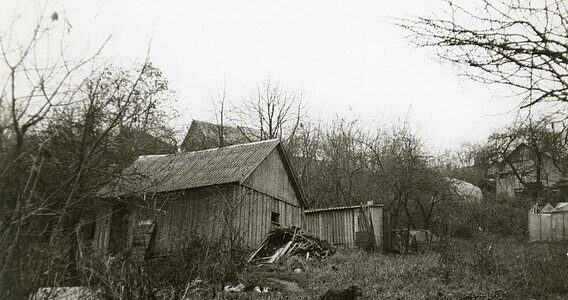Photo: Šiauliai ghetto territory in 1988, unknown photographer, courtesy Ninth Fort Museum.
by Kristina Tamelytė, LRT.lt, October 15, 2023
“A young girl had to be killed so we decided to drown her,” doctor Aharon Pitsk wrote in his diary in 1942. He died just before the Šiauliai [Shavl] ghetto was “liquidated” with surviving ghetto prisoners sent on to Dachau and Stutthof. Šiauliai had a Jewish population of over 8,000 people before the Holocaust and only a few hundred survived.
The Nazis issued an order it was illegal for Jews to procreate so a newborn was a danger to the family, the community and everyone. Unborn children also posed a danger so ghetto officials encouraged and demanded women get abortions. This was considered the lesser evil, the death of one person instead of several. The children who were born were subject to poisoning. This often wasn’t lethal so “a more effective method” was found.
Pitsk called Lithuania “my homeland” in his diary.
For years Pitsk’s diary languished on a shelf at his son’s home in Israel. It was published in Hebrew after his son died and was recently published in English, the manuscript having been translated by Gabriel Laufner and Andrew Cassel. The translators wanted to bring the little-known story of the Šiauliai ghetto to the wider English-speaking world.
The English translation of the diary and memoir is called “Notes from the Valley of Slaughter.”
The content is difficult, both due to the medical point of view of the author and the general Holocaust content. It’s not just the brutal behavior of the Nazis which takes one’s breath away, but also the doctor’s recollections of the state of the Jewish community before the war. Pitsk reveals the interwar world of Šiauliai with Lithuanians’ hatred of Jews, whispers of pogroms, references to “Lithuania for Lithuanians,” a constant tension and the constant lack of everything in the ghetto, and the people of the Jewish community who no longer seemed to be same people they had been.
Full text in Lithuanian here.


